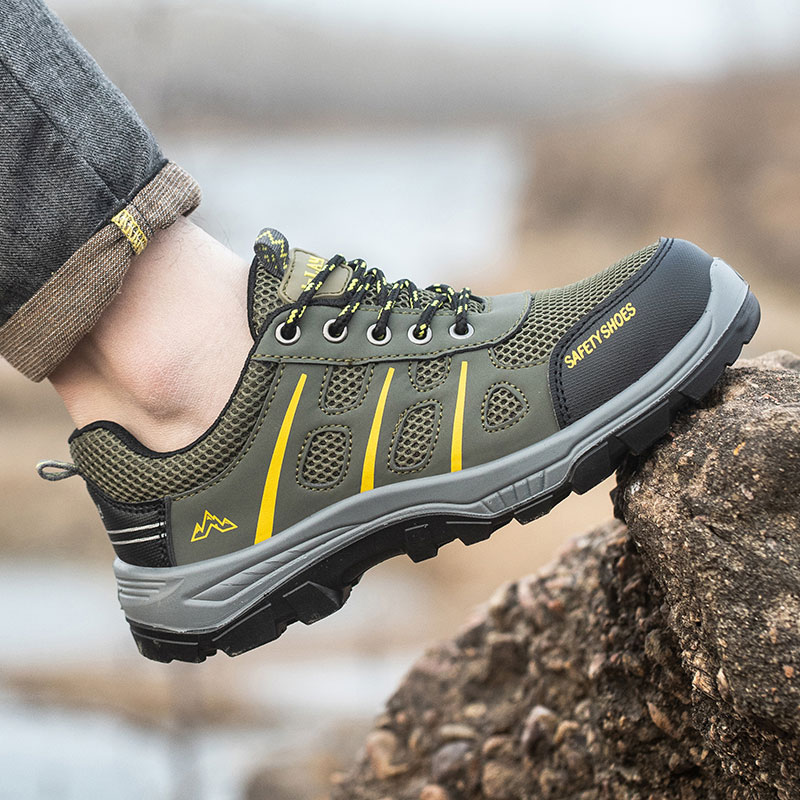
**5 Safety Shoe Classifications & Types Explained**
When it comes to workplace safety, protective footwear is non-negotiable. But not all safety shoes are created equal. Understanding the classifications and types of safety footwear ensures compliance with regulations like OSHA and CSA standards while reducing injury risks. Let’s break down the five critical categories of safety shoes, backed by industry data and certifications.
—
### 1. **Impact/Compression-Resistant Footwear (Toe Protection)**
Steel-toe boots dominate this category, but composite materials like TPU (thermoplastic polyurethane) and aluminum are gaining traction. According to CSA Z195 standards, safety shoes labeled **“Grade 1”** withstand up to **125 joules of impact energy** and **15,000 newtons of compression**.
**Key Applications**:
– Construction
– Manufacturing
– Warehousing
**Symbols to Look For**:
– **ASTM F2413-18** (U.S. standard)
– **EN ISO 20345:2022** (European standard)
– CSA’s **“1”** or **“2”** rating (1 = highest protection)
—
### 2. **Puncture-Resistant Soles**
These shoes feature midsole plates made of steel, Kevlar®, or composite materials to prevent sharp objects from penetrating. A 2022 UL Solutions study found that **67% of foot injuries in industrial settings** involve punctures from nails, glass, or debris.
**Certification Codes**:
– **“P”** in CSA ratings (e.g., “1-P-M-E-X”)
– **ASTM F2413-18 Puncture Resistance (PR)**
—
### 3. **Metatarsal Guard (M)**
Metatarsal guards protect the upper foot from crushing hazards. OSHA reports that **30% of foot injuries** affect the metatarsal region. Safety shoes with **“M” coding** (e.g., **“1-P-M-E-X”**) include internal or external guards tested to withstand **100 joules of impact**.
**Industries**:
– Heavy machinery operation
– Foundries
—
### 4. **Electrical Hazard (EH) & Static Dissipative (SD)**
Electrical hazard-rated shoes (e.g., **“E”** in CSA codes) insulate against up to **18,000 volts**, while static-dissipative footwear (**“S”** or **“C”**) controls static electricity in sensitive environments like labs or gas stations.
| Type | Resistance Level | Common Use Cases |
|———————|—————————|—————————|
| EH | ≤18kV | Electrical utilities |
| SD | 10⁶–10⁸ ohms | Explosive environments |
—
### 5. **Slip/Oil/Chemical-Resistant Outsoles**
Slip-resistant footwear reduces fall risks, which account for **25% of workplace injuries** (Bureau of Labor Statistics, 2023). Outsoles with **“SRA-SRB-SRC”** ratings (European standards) or **“SATRA TM144”** certification offer superior grip on wet/oily surfaces.
**Materials Matter**:
– Nitrile outsoles: Chemical resistance
– Rubber treads: Traction on uneven terrain
—
### Choosing the Right Safety Shoe: A Quick Guide
| Hazard Type | Required Classification | Example Brands |
|———————|—————————|—————————|
| Heavy falling objects | Grade 1 (CSA), ASTM F2413 | Timberland PRO, Red Wing |
| Chemical exposure | EH + Chemical-resistant | Dr. Martens Industrial |
| Static-sensitive zones| SD/SC | CAT Footwear, Dunlop |
—
### The Hidden Trend: Safety Shoes in Subcultures
Beyond industrial use, safety boots like **Dr. Martens** and **Grinders** have become fashion staples in punk and skinhead cultures. Their rugged design meets both ASTM standards and streetwear aesthetics—proving functionality and style can coexist.
**Pro Tip**: Always check for **dual certifications** (e.g., CSA + ASTM) if working across North America. For OSHA compliance, refer to **[OSHA’s Foot Protection Guidelines](https://www.osha.gov/laws-regs/regulations/standardnumber/1910/1910.136)**.
—
By matching footwear to hazards—and decoding certifications—employers can cut injury rates by **60%** (National Safety Council, 2022). Stay safe, stay stylish! 🔧👞

发表回复